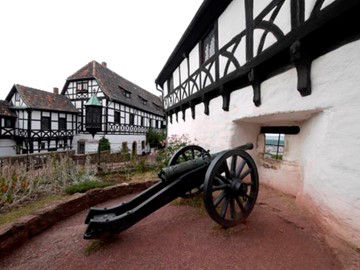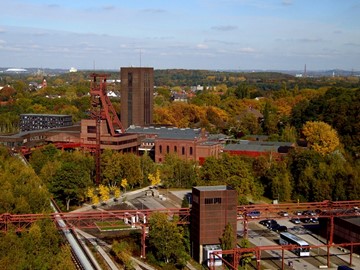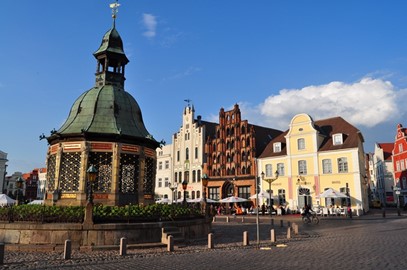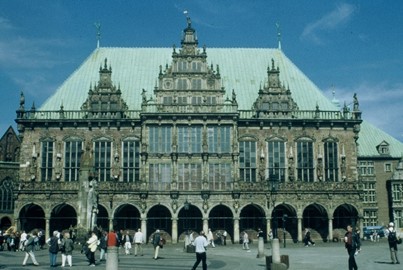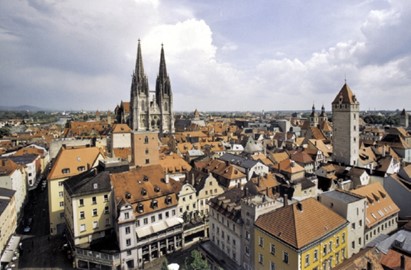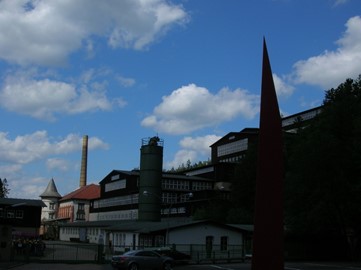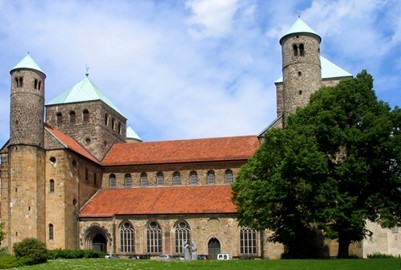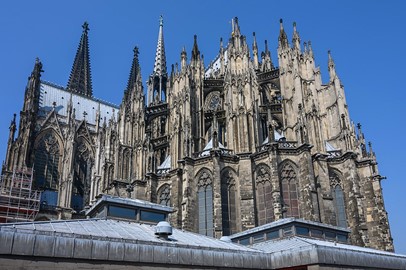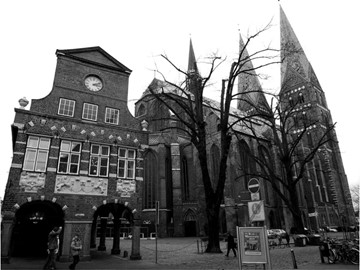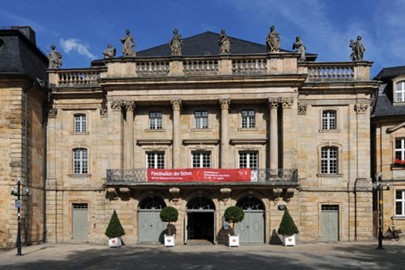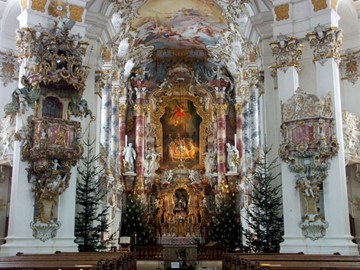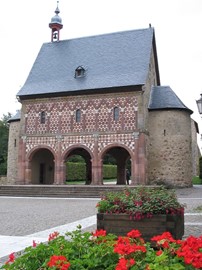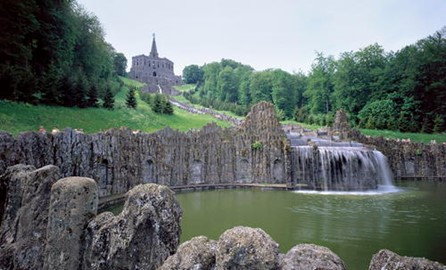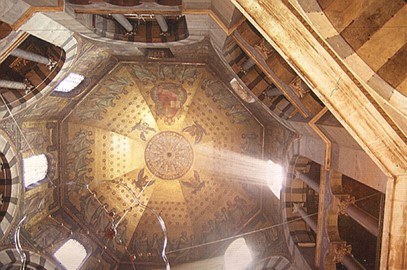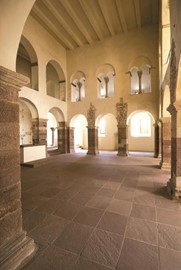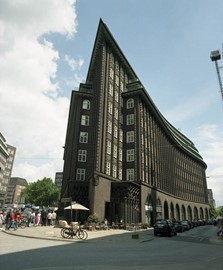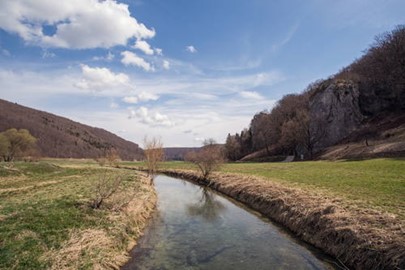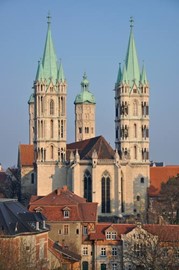category :: cultural
Wartburg Castle
Wartburg Castle, a UNESCO World Heritage site in Germany, is a medieval fortress perched atop a hill, dating back to the 11th century. Known for its role in sheltering Martin Luther during the Reformation, it blends Romanesque and Gothic architecture. The castle’s grand halls and towers reflect its historical significance as a cultural and political hub. Its well-preserved state offers a glimpse into feudal life and German heritage. This iconic site symbolizes both spiritual legacy and architectural prowess... Read More
Reichenau
Reichenau, a UNESCO World Heritage site in Germany, is an island renowned for its medieval monastic heritage from the 8th to 11th centuries. It features three well-preserved churches showcasing early Romanesque architecture and vibrant frescoes. Founded by St. Pirmin, the monastery became a key center of learning and manuscript production. Set in a serene lake landscape, it reflects the Carolingian era’s cultural and spiritual influence. This site offers a glimpse into Europe’s early medieval history. Its p... Read More
Zollverein
Zollverein Coal Mine, a UNESCO World Heritage site in Germany, is a striking industrial complex from the early 20th century, once a powerhouse of coal mining and steel production. Designed in the Bauhaus style, its towering shafts and vast halls blend functionality with modernist aesthetics. Built in the 1930s, it symbolizes the peak of the Industrial Revolution in Europe. The site includes a coking plant and workers’ settlements, reflecting the era’s social and economic life. Today, repurposed as a cultura... Read More
Upper Middle Rhine Valley
The Upper Middle Rhine Valley, a UNESCO World Heritage site in Germany, is a picturesque stretch of river landscape famed for its dramatic beauty and historical significance. Steep vineyard-covered slopes rise above the Rhine, dotted with medieval castles and charming villages. This romantic valley has inspired poets, artists, and composers for centuries. Its strategic location shaped trade and culture in Central Europe. The site blends natural splendor with a rich tapestry of human heritage. It stands as a... Read More
Stralsund and Wismar
Stralsund and Wismar, a UNESCO World Heritage site in Germany, are medieval Hanseatic towns renowned for their well-preserved Gothic brick architecture. Featuring grand churches, gabled houses, and historic marketplaces, they reflect the prosperity of the Hanseatic League’s trading network. These coastal settlements showcase a blend of maritime heritage and urban planning from the 13th and 14th centuries. Their robust fortifications and warehouses highlight their strategic importance in Northern Europe. Thi... Read More
Town Hall and Roland, Bremen
The Town Hall and Roland, a UNESCO World Heritage site in Germany, is a historic ensemble showcasing Bremen’s medieval and Renaissance heritage. The Town Hall, built in the 15th century, features ornate gables and a grand facade, reflecting civic pride and architectural mastery. Nearby stands the Roland statue, a 1404 symbol of independence and justice, towering over the market square. Together, they represent Bremen’s role as a key Hanseatic trading city. This site offers a striking glimpse into Germany’s ... Read More
Regensburg
Old town of Regensburg, a UNESCO World Heritage site in Germany, is a well-preserved medieval city renowned for its historical significance and architectural treasures. Founded by the Romans in 179 AD as a military camp, it evolved into a thriving trade center by the Middle Ages, boasting over 1,500 listed buildings, including the Gothic St. Peter’s Cathedral and the 12th-century Stone Bridge. Its old town, with narrow cobblestone streets and colorful facades, reflects a rich cultural heritage spanning near... Read More
Berlin Modernism Housing Estates
The Berlin Modernism Housing Estates, a UNESCO World Heritage site in Germany, comprise six residential complexes built between 1913 and 1934, showcasing innovative urban planning and architecture from the early 20th century. Designed by prominent architects like Bruno Taut and Martin Wagner, these estates reflect the Weimar Republic’s efforts to address housing shortages with functional, affordable, and aesthetically bold designs. Featuring flat roofs, colorful facades, and communal green spaces, they exem... Read More
Rammelsberg and Goslar
The Mines of Rammelsberg, Historic Town of Goslar, and Upper Harz Water Management System form a UNESCO World Heritage site showcasing a remarkable blend of industrial and cultural history. The mines, operational for over 1,000 years, highlight medieval mining technology, while the well-preserved historic town reflects its prosperity from the industry. The innovative water management system, with its intricate network of ponds and channels, powered the mines and stands as a testament to early engineering in... Read More
Hildesheim Cathedral and St Michael's Church
Hildesheim Cathedral and St. Michael’s Church, a UNESCO World Heritage site in Germany, represent outstanding examples of early Romanesque architecture. The cathedral, dedicated to St. Mary, features the famous bronze Bernward Doors and a 1,000-year-old rose bush, symbolizing resilience. St. Michael’s Church, built under Bishop Bernward’s patronage, showcases intricate design and a unique painted ceiling depicting the Tree of Jesse. Together, these landmarks highlight medieval artistry and religious signifi... Read More
Cologne Cathedral
Cologne Cathedral, a UNESCO World Heritage site in Germany, is a stunning Gothic masterpiece begun in 1248 and completed in 1880. Its iconic twin spires, intricate stained glass, and ornate architecture draw millions of visitors annually. Housing the Shrine of the Three Kings, it’s a significant Catholic pilgrimage site. The cathedral also showcases remarkable resilience, having survived World War II bombings. Today, it stands as a symbol of cultural and historical enduring legacy.
Lubeck
The Hanseatic City of Lübeck, a UNESCO World Heritage site in Germany, is renowned for its well-preserved medieval architecture and historical significance as a key trading hub of the Hanseatic League. Founded in the 12th century, it boasts landmarks like the iconic Holstentor gate, the stunning Lübeck Cathedral, and the charming old town with its brick Gothic buildings. Its cultural and architectural legacy reflects its past prominence as a center of maritime commerce in Northern Europe. Today, Lübeck rema... Read More
Würzburg Residence
This magnificent Baroque palace – one of the largest and most beautiful in Germany and surrounded by wonderful gardens – was created under the patronage of the prince-bishops Lothar Franz and Friedrich Carl von Schönborn. It was built and decorated in the 18th century by an international team of architects, painters (including Tiepolo), sculptors and stucco-workers, led by Balthasar Neumann.
Fagus Factory
The Fagus Factory, a UNESCO World Heritage site in Germany, is an iconic early modernist building designed by architect Walter Gropius in 1911. Constructed primarily of glass, steel, and brick, it served as a shoe factory and revolutionized industrial architecture with its innovative use of large windows and open interior spaces. The structure reflects the Bauhaus movement’s emphasis on functionality, simplicity, and the integration of art and industry. Today, it stands as a testament to architectural progr... Read More
Margravial Opera House
The Margravial Opera House, a UNESCO World Heritage site in Germany, is an exquisite example of Baroque architecture, completed in 1748 under the commission of Margravine Wilhelmine. Renowned for its well-preserved wooden interior and elaborate stage machinery, it showcases the opulence of 18th-century court culture. The theater’s intricate design and acoustics make it a standout historical venue, originally built for opera and theatrical performances. Today, it serves as a cultural landmark, attracting vis... Read More
Pilgrimage Church of Wies
The Pilgrimage Church of Wies, a UNESCO World Heritage site in Germany, is a stunning example of Bavarian Rococo architecture, designed by Dominikus Zimmermann in the mid-18th century. Built as a place of pilgrimage following reports of miracles, it features an ornate interior with vibrant frescoes and intricate stucco work that blend harmoniously with its simple exterior. The church stands as a testament to religious devotion and artistic mastery, attracting visitors for its cultural and historical signifi... Read More
Abbey and Altenmünster of Lorsch
Abbey and Altenmünster of Lorsch, a UNESCO World Heritage site in Germany, is a well-preserved example of Carolingian architecture from the 8th and 9th centuries. Founded as a Benedictine monastery, it played a significant role in the religious and cultural development of the region during the early Middle Ages. The site includes the iconic Torhalle (gatehouse), one of the few remaining structures of its kind, showcasing intricate stonework and historical significance. Its recognition by UNESCO highlights i... Read More
Bergpark Wilhelmshöhe
Bergpark Wilhelmshöhe, a UNESCO World Heritage site in Germany, is an impressive 18th-century landscape park renowned for its grand architecture and elaborate water features. Created by Landgrave Wilhelm IX, it features the striking Hercules monument perched atop a hill, overlooking a vast cascading fountain system that culminates in a dramatic 250-meter-long water display. The park seamlessly blends Baroque design with Romantic ideals, showcasing historic structures like the Löwenburg Castle alongside meti... Read More
Aachen Cathedral
Aachen Cathedral, a UNESCO World Heritage site in Germany, is a masterpiece of Carolingian architecture, renowned for its historical and cultural significance. Constructed under Charlemagne in the late 8th century, it served as his palatine chapel and later became the coronation church for German kings. The cathedral’s octagonal dome and intricate mosaics reflect a blend of Roman, Byzantine, and Germanic influences. Its treasury houses an exceptional collection of medieval artifacts, including the reliquary... Read More
Corvey Abbey
Corvey Abbey, a UNESCO World Heritage site in Germany, is a remarkable example of Carolingian architecture and history. Founded in 822 as a Benedictine monastery, it became a significant cultural and religious center during the Middle Ages. The abbey's well-preserved Westwerk, a monumental entrance structure, showcases intricate frescoes and is one of the few surviving examples of its kind from the 9th century. Its historical importance is further highlighted by its role in the spread of Christianity and it... Read More
Speicherstadt and Kontorhaus District
The Speicherstadt and Kontorhaus Districts in Germany form a UNESCO World Heritage site renowned for their historical and architectural significance. Speicherstadt, the world’s largest contiguous warehouse complex, showcases neo-Gothic red-brick structures built between 1883 and 1927, designed for maritime trade along the Elbe River. Adjacent Kontorhaus District features early 20th-century office buildings, including the pioneering Chilehaus, exemplifying Brick Expressionism. Together, they represent Hambur... Read More
Caves and Ice Age Art
Caves and Ice Age Art in the Swabian Jura, a UNESCO World Heritage site, features some of the oldest known human art, dating back over 40,000 years. Discovered within limestone caves, these artifacts include intricately carved figurines, such as the famous Lion Man, crafted from mammoth ivory. The site offers critical insights into early human creativity and Ice Age life, with archaeological findings like musical instruments and animal depictions. Ongoing excavations continue to reveal the cultural signific... Read More
Bauhaus Sites
The Bauhaus and its Sites in Weimar, Dessau, and Bernau, a UNESCO World Heritage site in Germany, represent a groundbreaking modernist movement in architecture and design. Established in 1919 by Walter Gropius, the Bauhaus school revolutionized artistic education by integrating crafts, fine arts, and technology. Its iconic buildings, designed by Gropius and other notable architects, showcase functionalist principles with minimalist aesthetics, emphasizing geometric forms and industrial materials. Recognized... Read More
Hedeby and the Danevirke
Hedeby and the Danevirke, a UNESCO World Heritage site in Germany, represent a significant archaeological complex from the Viking Age. Hedeby was a thriving trading settlement in the 8th to 11th centuries, showcasing advanced urban planning and international commerce, while the Danevirke, a massive earthen fortification, served as a defensive wall built by the Danes to protect their southern border. Together, they highlight the cultural, economic, and military prowess of the Norse people during this period.... Read More
Naumburg Cathedral
Naumburg Cathedral, a UNESCO World Heritage site in Germany, is a stunning example of medieval architecture, renowned for its Romanesque and Gothic styles. Constructed primarily in the 13th century, it houses the famous Naumburg Master sculptures, including the expressive donor figures of Uta and Ekkehard. The cathedral’s intricate west choir screen and vibrant stained glass windows highlight its historical and artistic significance. It stands as a testament to the craftsmanship and religious devotion of th... Read More
